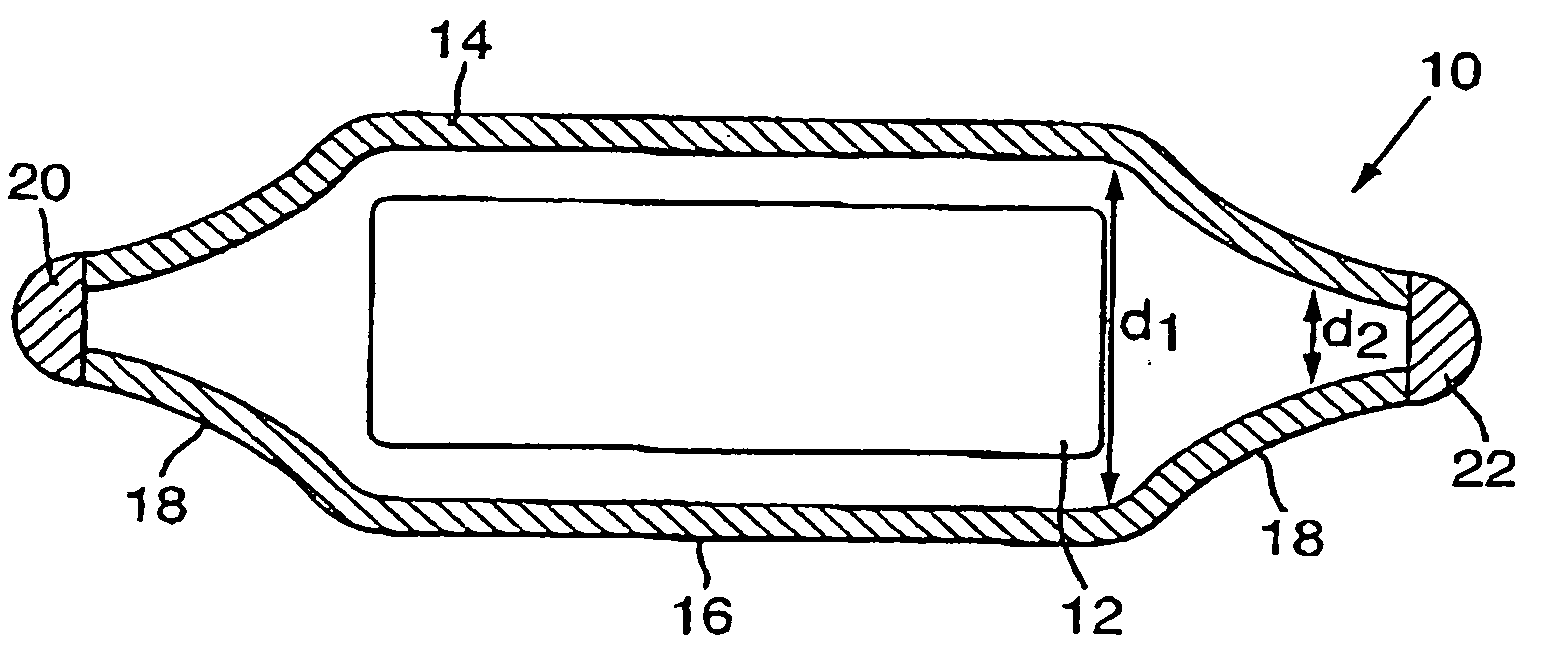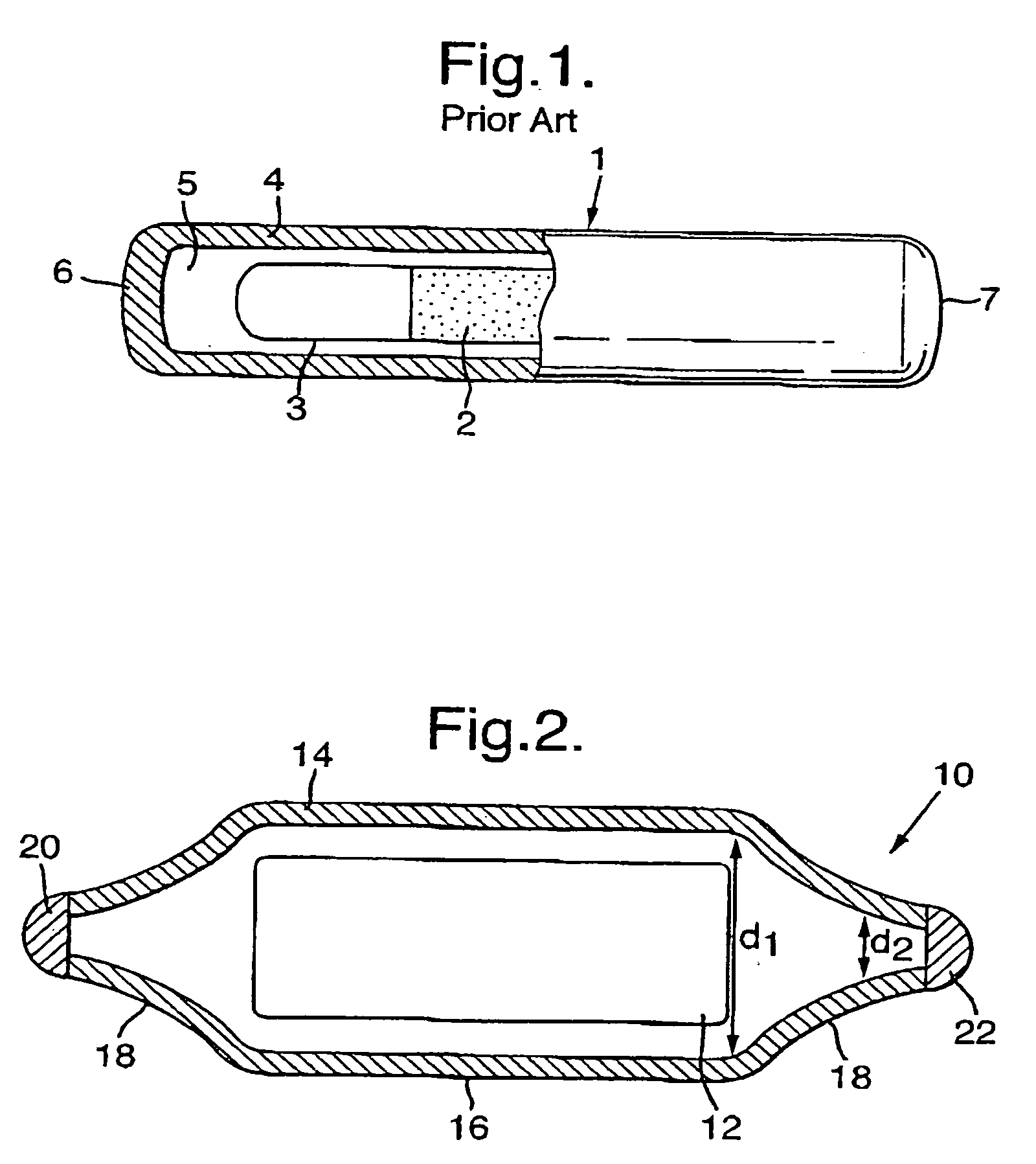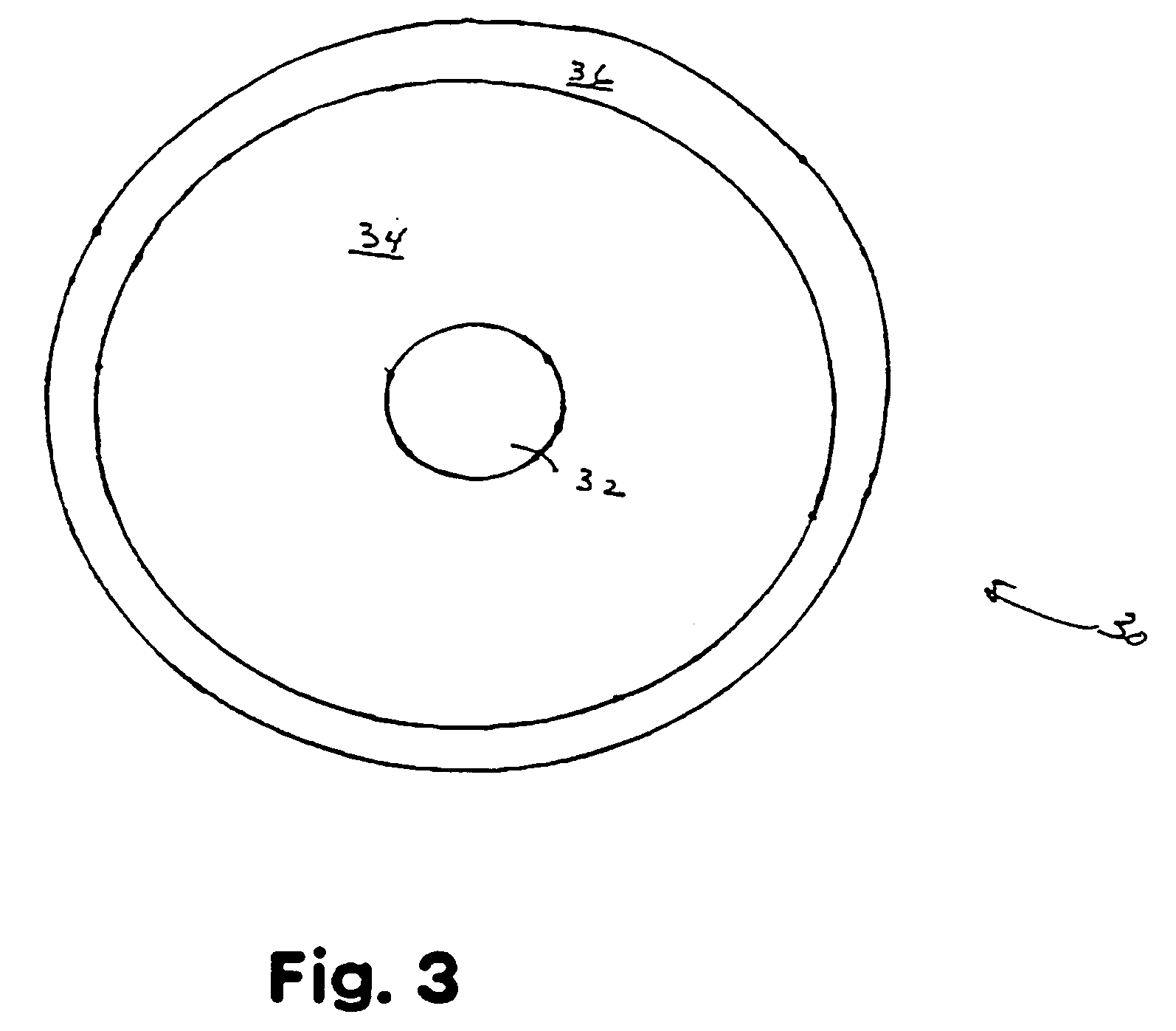Carrier-free 103pd brachytherapy seeds
a carrier-free, brachytherapy technology, applied in the field of radiotherapy and carrier-free palladium103 (103pd) brachytherapy seeds, can solve the problems of revealing any carrier method, difficult to achieve, inevitably occurring absorption and damage to healthy tissue, etc., and achieve uniform radiation dose
- Summary
- Abstract
- Description
- Claims
- Application Information
AI Technical Summary
Benefits of technology
Problems solved by technology
Method used
Image
Examples
example 1
Coating of a Substrate with Nickel
[0077] A substrate can be coated with nickel by immersing the substrate in an electroless bath containing 4.7 g / L nickel sulfate hexahydrate, 3.0 g / L sodium hypophosphite hydrate, 8.1 g / L sodium citrate dihydrate, and 4.0 g / L ammonium chloride, at pH 9.25. About 5 mL of this nickel electroless bath was added to a small glass vial containing 200 zincated aluminium pins having a silver core. The vial was rotated at 75° C. for 15 minutes. The resulting substrates were nickel-plated, silver-cored aluminium pins.
example 2
Electroless Deposition of Non-Radioactive Palladium
[0078] The electroless deposition of 7 μg (micrograms) of non-radioactive palladium from different electroless baths onto 700 cleaned copper wires was evaluated. The results are summarized below:
Bath Composition% Bath Depletion1)0.1 N HCl91.3%Ammonium sulfate / citrate2) 0%0.001 N HCl97.3%
1)percent of Pd plated from the solution; and
2)13.2 g / L ammonium sulfate, 24.3 g / L ammonium citrate, and 50 mL / L ammonium hydroxide.
example 3
Electroless Deposition of 103Pd
[0079] The electroless deposition of carrier-free 103Pd onto a nickel-coated substrate of Example 1 was carried out using an alkaline bath. The alkaline bath contained carrier-free 103Pd, ammonium hydroxide (50 mL / L), optional citrate (24.3 g / L) (as a buffer), and a hydrazine (12 mL / L) or a hypophosphite (4.1 g / L) (as a reducing agent). The tests showed a reproducible bath depletion of carrier-free 103Pd of over 90%.
PUM
| Property | Measurement | Unit |
|---|---|---|
| diameter | aaaaa | aaaaa |
| length | aaaaa | aaaaa |
| length | aaaaa | aaaaa |
Abstract
Description
Claims
Application Information
 Login to View More
Login to View More - R&D
- Intellectual Property
- Life Sciences
- Materials
- Tech Scout
- Unparalleled Data Quality
- Higher Quality Content
- 60% Fewer Hallucinations
Browse by: Latest US Patents, China's latest patents, Technical Efficacy Thesaurus, Application Domain, Technology Topic, Popular Technical Reports.
© 2025 PatSnap. All rights reserved.Legal|Privacy policy|Modern Slavery Act Transparency Statement|Sitemap|About US| Contact US: help@patsnap.com



